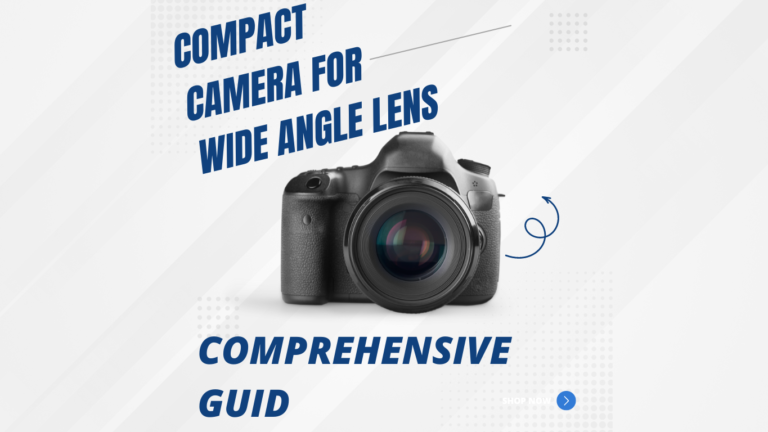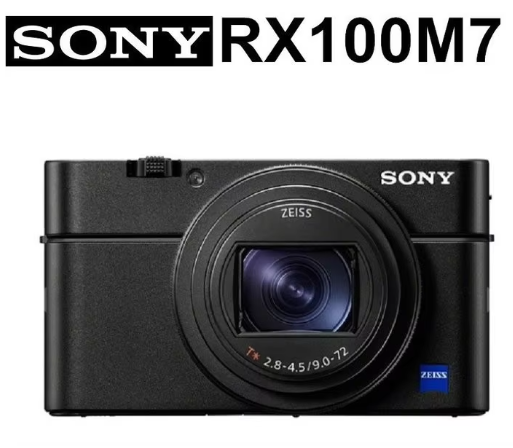Point-and-shoot cameras have greatly evolved to bring substantial capabilities together in their compact size. For lovers of photography and travelers who seek to get great shots without the bulk of more significant equipment, some of the best point-and-shoot cameras present just what they’d want. Equipped with wide-angle capabilities, advanced sensors, and sophisticated technologies all in pocket-sized cameras, these cameras become a perfect companion for capturing dramatic landscapes or everyday life.
A number of factors come into play when choosing a point-and-shoot camera: wide-angle options. Focal length, aperture, and sensor size all impact image quality and versatility. Many cameras boast high performance, such as the Sony RX100 VII that records 4K video and features high-level autofocus systems. This article will look at some of the best options for compact wide-angle cameras and take a closer look at some of the most important features to look at, as well as some hints and tips on shooting techniques that will help photographers get the best out of their camera.
Table of Contents
Top Wide-Angle Compact Cameras
The Sony RX100 VII might be one of the most versatile of all point-and-shoot cameras. This 24-200mm-equivalent lens provides a wide-angle perspective in landscape photography and features impressive image quality throughout the zoom range. Its 1-inch sensor delivers sharp JPEGs, with great low-light performance. A variable aperture of f/2.8-4.5 gives creative control over depth of field and bokeh. 4K video capabilities give it an added oomph that makes it one of the best options both for stills capture and motion capture.
For those looking for an even wider focal length, the Ricoh GR III stands out as an excellent option. Having a 28mm equivalent lens allows a greater field of view, ideal to shoot streets and architecture. It is small, discreet, and just great for candid shots. While not offering the versatility of zooms, such as the Sony, this Ricoh makes up for it with a larger APS-C sensor to deliver better image quality in a pocketable form factor.
Key Features to Consider
The other important features worth paying attention to when choosing the best point-and-shoot camera concern sensor size. Generally speaking, larger sensors, such as an APS-C or 1-inch sensor, tend to provide sharper images with wider color gamuts than those captured by the small sensor in a smartphone. Another important factor is the focal length, given that this actually determines the camera’s angle of view. Most often, a wide-angle lens is needed for landscape and wide-scene shots. You would want something with a focal length of 24-28mm equivalent.
Aperture is an important factor, since it affects depth of field and low-light performance. Cameras with wider maximum apertures, such as f/2.8, allow for more creative control over bokeh and will perform better in low-light scenarios. For example, the Sony RX100 VII offers a really versatile 24-200mm equivalent lens with a variable aperture of f/2.8-4.5, balancing great wide-angle capability with longer reach zoom 1.
Besides, 4K video recording, image stabilization, and advanced autofocus systems increase both the general shooting experience and creative possibilities that photographers can get using point-and-shoot cameras.
Shooting Techniques for Wide-Angle Photography
When using wide-angle lenses for landscape photography, it’s crucial to get close to foreground elements. This technique helps create a sense of depth and balance within the frame. Photographers often find that getting low to the ground and using leading lines, such as dune grass or water flows, can enhance the composition. The Sony RX100 VII, with its 24-200mm equivalent lens, offers versatility for capturing both wide expanses and detailed foregrounds. To ensure sharpness throughout the image, consider using a narrow aperture like f/13 and focusing about one-third into the frame. This approach, combined with the camera’s excellent JPEG quality, allows for stunning landscape shots with a wide field of view and impressive depth of field.
Conclusion
Point-and-shoot cameras with wide-angle capabilities have revolutionized compact photography. These pocket-sized devices now offer impressive features like advanced sensors, sophisticated autofocus systems, and 4K video recording. The Sony RX100 VII and Ricoh GR III stand out as top choices, each bringing unique strengths to the table. When choosing a camera, key factors to consider include sensor size, focal length, and aperture, as these have a significant impact on image quality and versatility.
To make the most of wide-angle photography, getting close to foreground elements and using leading lines can enhance composition and create depth. The right camera, combined with these techniques, allows photographers to capture stunning landscapes and everyday moments with ease. As technology continues to advance, we can expect even more impressive features in future compact cameras, further blurring the line between professional and casual photography equipment.


